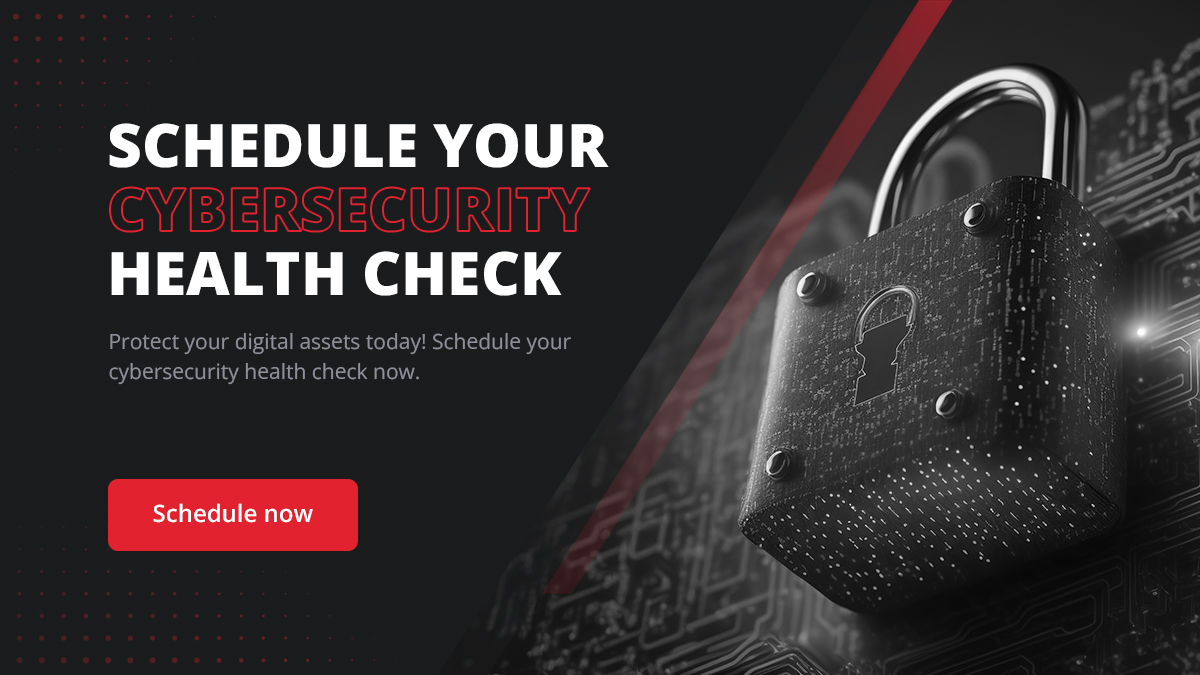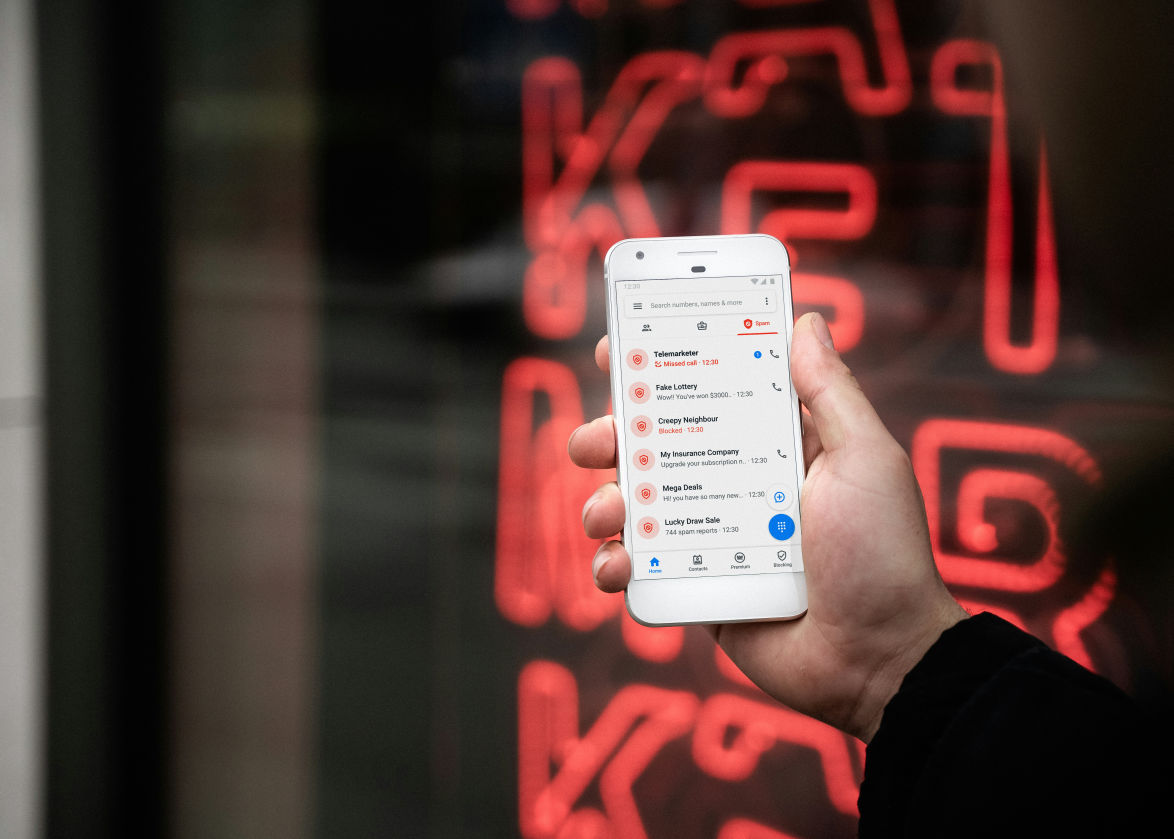Boost Your Security with Internal Penetration Testing

Introduction to Internal Penetration Testing
The need for robust defenses against internal and external threats has never been more pronounced in cybersecurity. As organizations increasingly rely on complex networks and digital systems, the potential for security breaches from within these infrastructures has escalated. Internal penetration testing emerges as a critical tool in the arsenal of cybersecurity strategies to safeguard a company's internal environment against sophisticated threats.
What Is Penetration Testing?
Penetration testing, commonly called "pen testing," is a simulated cyber attack against your computer system to check for exploitable vulnerabilities. In the context of IT security, such testing is used to augment a web application firewall (WAF). Penetration tests are typically conducted to find weaknesses (also referred to as vulnerabilities) in an organization's network, which attackers could exploit.
The process involves the identification of the system's vulnerabilities, which might include unsanitary inputs susceptible to code injection attacks or insecure settings that enable unauthorized access. Pen testers, or ethical hackers, use the same tools and techniques as attackers but do so in a controlled and safe manner. This proactive approach helps to identify security weaknesses that could be exploited by malicious hackers.
Defining Internal Penetration Testing
Internal penetration testing focuses on an organization’s internal IT assets, such as servers, applications, and network devices. Unlike external penetration testing, which looks at assets exposed to the internet, internal tests simulate an attack by a malicious insider or an attacker who has gained access to an internal network. This type of testing is crucial because it assumes the attacker is already inside the network and thus bypasses any external defenses like firewalls.
Internal penetration tests aim to demonstrate how far an attacker can navigate through internal systems and potentially access sensitive data, highlighting the need for robust internal security measures and incident response strategies.
Importance of Internal Penetration Testing in Cybersecurity
The significance of internal penetration testing in cybersecurity cannot be overstated. It serves several vital purposes:
- Detection of Internal Threats: It helps identify potential security threats from within the organization that might not be visible through external testing.
- Security Validation: Validates the effectiveness of internal security policies and employee compliance with these policies.
- Risk Management: Helps manage risks by identifying exploitable vulnerabilities within the network.
- Compliance Assurance: Ensures compliance with various regulatory requirements that demand evidence of rigorous security measures.
- Incident Response Testing: Tests the organization’s incident response capabilities to handle a security breach effectively.
Conducting an Internal Penetration Test
Information Gathering
The first phase of conducting an internal penetration test is information gathering, which involves collecting as much data as possible about the internal IT environment. This phase is crucial as it lays the groundwork for identifying potential targets and weaknesses. Information gathering can include documenting network infrastructure, identifying server locations, cataloging software versions in use, and understanding security controls already in place. Tools such as network scanners and SNMP (Simple Network Management Protocol) enumerators are commonly used in this stage to automate data collection and system identification.
Threat Modeling
Threat modeling is the next step in an internal penetration test. This process involves identifying, predicting, and defining potential threats to the network, such as unauthorized access, data theft, or service disruption. Testers can simulate attacks more realistically by understanding what assets are most valuable and vulnerable. Threat modeling aims to prioritize the threats and develop strategies to mitigate them, focusing on the most likely attacks that could occur from within the organization.
Vulnerability Analysis
Vulnerability analysis is a critical component of internal penetration testing where the identified systems are scanned and analyzed for known security weaknesses. This phase utilizes various tools and techniques to pinpoint software bugs, misconfigurations, and other vulnerabilities that an insider might exploit. Commonly used tools include vulnerability scanners and static analysis tools, which help to automate the detection of issues such as out-of-date software patches, weak passwords, and improper access controls. The findings from this analysis guide the penetration testers in designing their simulated attacks to exploit these vulnerabilities.
Exploitation
Once vulnerabilities have been identified and prioritized, the exploitation phase begins. In this step, penetration testers attempt to exploit identified vulnerabilities to determine the impact of an attack on the organization's internal network. This could involve escalating privileges, intercepting traffic, or accessing restricted areas of the network. The goal is to understand how deep an attacker could penetrate into the system using these vulnerabilities. Techniques such as password cracking, SQL injection, or the use of zero-day exploits are often utilized depending on the vulnerability exposed during the analysis phase.
Post-Exploitation
After successfully exploiting vulnerabilities, the post-exploitation phase assesses what an attacker could do once they have gained control. This phase is about understanding the extent of the damage or data breach that could occur after the initial network breach. Penetration testers might explore establishing persistence in the system, bypassing security controls, or accessing highly confidential data. Additionally, this phase involves cleaning up any traces of the penetration test to avoid unintended disruptions or continued vulnerabilities.

Reporting and Analysis
The final phase in internal penetration testing is reporting and analysis. This crucial step involves compiling the data gathered throughout the testing process into a comprehensive report. The report typically includes details of the vulnerabilities discovered, the exploitation methods used, the potential impact of the breaches, and recommendations for remediation. This documentation helps stakeholders understand the organization's security posture and guides the next steps in fortifying the network's defenses.
The Role of Ethical Hackers in Internal Penetration Testing
Ethical hackers play a pivotal role in internal penetration testing. These cybersecurity professionals are employed to use their skills to find and fix vulnerabilities within an organization's IT infrastructure before malicious attackers can exploit them. Ethical hackers use the same tools and techniques as malicious hackers but do so legally and with permission to improve security. Their work is essential for discovering hidden security weaknesses that could not be identified by automated systems or traditional IT audits. By simulating real-world attacks, they provide invaluable insights into the security readiness of an organization, thereby helping to enhance its defensive strategies.
Who Performs Internal Pen Tests?
Internal Security Teams
Many organizations rely on their internal security teams to conduct internal penetration tests. These teams are composed of in-house cybersecurity experts who understand the nuances of their company's IT infrastructure and internal policies. Organizations can ensure continuous monitoring and quick responses to security vulnerabilities by utilizing internal teams. However, relying solely on internal teams may lead to potential biases or overlooked vulnerabilities due to familiarity with the system, highlighting the importance of having a diverse team with varied skill sets.
External Cybersecurity Firms
External cybersecurity firms like RedZone Technologies are often hired to perform internal penetration tests, especially for organizations that lack in-house expertise or wish to ensure an unbiased assessment. These firms bring a fresh perspective to the security challenges an organization faces. They are typically equipped with broader experience dealing with various industry threats. Employing external firms can also enhance credibility with stakeholders by demonstrating a commitment to security that meets global standards. These firms often use advanced tools and methodologies that may not be available in-house, providing a deeper insight into potential security weaknesses.
Certified Ethical Hackers (CEH)
Certified Ethical Hackers (CEH) are professionals who have been specifically trained and certified to conduct penetration tests and ethical hacking activities. Holding a CEH certification indicates a high level of competency in network security, particularly in preemptively managing potential cybersecurity threats. CEHs use their skills to mimic the techniques employed by malicious hackers but in a controlled and legal manner. They can be part of internal security teams and external firms, bringing a structured approach to identifying, exploiting, and reporting IT vulnerabilities. Their certification ensures that they adhere to ethical standards and the latest penetration testing protocols, making them invaluable in the realm of internal penetration testing.

Penetration Testing Specialists
Penetration testing specialists are professionals who focus specifically on testing the security of computer systems, networks, and web applications by simulating attacks. These specialists are highly skilled in advanced technical testing techniques and often hold various certifications in cybersecurity beyond the Certified Ethical Hacker (CEH) designation, such as Offensive Security Certified Professional (OSCP) or Certified Information Systems Security Professional (CISSP). Their role in internal penetration testing is critical as they bring a detailed, technical perspective to identify and exploit complex security vulnerabilities that generic IT professionals might overlook. Organizations often engage these specialists for their ability to dive deep into system security and provide comprehensive technical assessments that ensure all layers of the IT infrastructure are thoroughly evaluated.
Independent Security Consultants
Independent security consultants operate outside the traditional frameworks of internal teams or cybersecurity firms. These consultants offer a unique blend of expertise and flexibility, catering to organizations that might not require full-scale penetration testing services frequently or prefer a more tailored approach. Independent consultants can provide a highly customized service, focusing on specific areas of concern within an organization's network. They are particularly useful for small to medium-sized enterprises that require expert advice but may not have the resources to employ a full-time internal security team or retain an external firm. These consultants often build long-term relationships with their clients, gaining a deep understanding of the specific security challenges and needs of the organizations they serve. This can be particularly beneficial in continually adapting to evolving security threats.
What Are the Different Types of Internal Penetration Tests?
Network Service Penetration Tests
Network service penetration tests focus on identifying vulnerabilities in the servers, hosts, and devices on an organization's internal network. For instance, Microsoft has concluded support for MS Server 2012 R2, so this type of testing aims to discover issues like outdated software, misconfigurations, and vulnerabilities within network services and protocols that hackers could exploit. By simulating attack scenarios that could be used to gain unauthorized access or escalate privileges, penetration testers can help organizations strengthen their network defenses. These tests are crucial for maintaining the integrity of network infrastructure and ensuring that internal services are secured against potential attacks.
Client-Side Penetration Testing
Client-side penetration testing targets vulnerabilities in software applications accessed by end-users, such as web browsers, email clients, and office applications. This type of testing is essential because attackers often exploit client-side applications to gain access to the organization's network. Testers simulate various attacks, including phishing, malicious file attachments, and exploiting software vulnerabilities that have not been updated or patched. The aim is to identify how attackers could leverage client-side applications to penetrate corporate defenses and execute malicious activities.
Wireless Network Penetration Testing
Wireless network penetration testing identifies security weaknesses within an organization's wireless network protocols, such as Wi-Fi. This includes testing for vulnerabilities that could allow unauthorized access, eavesdropping, or the injection of malicious traffic. Testers might simulate attacks on both the encryption used by the wireless network and the authentication process. The goal is to ensure that wireless networks are secure from attacks that could compromise confidential information or disrupt business operations.
Social Engineering Testing
Social engineering testing is a unique type of internal penetration testing that focuses on exploiting human psychology rather than technical vulnerabilities. This form of testing assesses the readiness of the organization's staff to withstand attempts to manipulate them into performing actions or divulging confidential information. Techniques may include phishing emails, pretexting, baiting, and physical security tests, like tailgating into restricted areas. Social engineering tests help organizations understand potential vulnerabilities within their human resources and improve training and protocols to mitigate these risks.
Physical Security Penetration Testing
Physical security penetration testing evaluates the effectiveness of the security measures that protect an organization's physical assets. This type of testing includes attempts to bypass physical barriers such as locks, security badges, biometric scanners, and surveillance systems. The goal is to identify vulnerabilities that could allow unauthorized individuals to gain physical access to sensitive areas and obtain confidential or proprietary information. This test highlights the need for comprehensive security measures that encompass not only digital but also physical defenses.

Application Penetration Testing
Application penetration testing is designed to uncover vulnerabilities in an organization's applications. This could include web applications, mobile applications, or any software application critical to business operations. Testers use various methods to probe for security weaknesses, such as injection attacks, broken authentication, insecure session management, and cross-site scripting (XSS). The primary aim is to ensure that applications are robust against attacks that could compromise data integrity, availability, and confidentiality.
Database Penetration Testing
Database penetration testing identifies security issues within an organization’s database management systems. Testers look for vulnerabilities that could allow SQL injection attacks, unauthorized data exposure, data leakage, and improper database configurations. This type of testing is crucial because databases often hold an organization's most sensitive data. Ensuring that databases are secure from internal and external threats is paramount to maintaining data integrity and security.
VoIP Penetration Testing
VoIP (Voice over Internet Protocol) penetration testing assesses the security of an organization's VoIP infrastructure. This includes testing for vulnerabilities that could be exploited to intercept calls, inject malicious audio, or disrupt services. Since VoIP services often use the internet or other network protocols, they are susceptible to many network attacks. The test aims to ensure the confidentiality and availability of voice communications are well-protected.
Device Penetration Testing
Device penetration testing specifically targets the security of various devices connected to an organization’s network, including printers, scanners, and other network-connected devices. This testing is critical as these devices often provide backdoor access to the network's main systems. Testers simulate attacks to identify any vulnerabilities that could be exploited to gain unauthorized access to the network or sensitive data.
Cloud Penetration Testing
Cloud penetration testing focuses on the security of services and data stored in the cloud. This includes testing cloud configurations, storage, and applications for vulnerabilities that could be exploited by unauthorized users. Since cloud environments are different from traditional on-premises setups, specific techniques tailored to the cloud's architecture are used to ensure that data stored in the cloud is secure from unauthorized access, leakage, or loss. This type of testing is essential as more organizations rely on cloud services for their critical operations.
Internal Penetration Testing Methods
Black Box Pen Testing
Black box penetration testing is a method where the tester has no prior knowledge of the internal network and systems they are testing. This approach simulates an attack by an external hacker who has no inside information about the organization’s IT infrastructure. Testers use public information and their skills to uncover vulnerabilities, which makes this type of testing unpredictable and can provide a realistic scenario of how an actual attack might occur. This method helps identify weaknesses in the public-facing components of the network, such as the web applications and external access points.
White Box Pen Testing
In contrast to black box testing, white box penetration testing provides the tester with complete knowledge of the internal systems, including network diagrams, source code, and credentials. This comprehensive information allows testers to thoroughly assess the internal environment, focusing on obvious and obscure vulnerabilities. This method is akin to testing from the perspective of an internal developer or someone with full access, which can be crucial for identifying deeper security issues that might be missed during black box testing.
Gray Box Pen Testing
Gray box penetration testing is a blend of black-and-white box testing methodologies. Testers have partial knowledge of the internal systems, which often reflects the level of access that a privileged user might have. This approach allows testers to assess the network with enough context to be efficient but not so much that it removes the challenge of discovering vulnerabilities without full visibility. Gray box testing is effective for simulating attacks from users with intermediate-level access, such as a contracted employee or a third-party vendor.
Targeted Testing
Targeted testing, or lights-on testing, involves the organization’s IT team and the penetration testers. It is a collaborative approach where both parties know the testing exercises. This method is useful for training the internal IT team on real-time attack detection and response. It allows for immediate feedback and strategy adjustment, which can benefit organizations looking to enhance their security measures through interactive and educational engagements.
Blind Testing
Blind testing involves a scenario where the penetration tester has limited knowledge about the organization, similar to black box testing, but typically with even less information provided. The purpose is to simulate an attack from a typical hacker's perspective, who may only know the company's name or have limited external data. This method tests the ability of both the security systems and the response teams to detect and respond to an unexpected breach.
Double-Blind Testing
Double-blind testing is the most realistic and rigorous method of penetration testing. In this scenario, neither the security personnel nor the testers have prior knowledge of the planned attack. Not even the IT and security teams within the organization are aware that a test is being conducted. This method truly tests the organization's defensive capabilities and the effectiveness of its incident identification and response procedures. Double-blind testing helps to provide a clear picture of how an actual attack would unfold and the organization's readiness to handle it without any preparedness bias.
Best Tools for Internal Penetration Testing
Internal penetration testing requires various tools that can effectively assess different aspects of an organization's IT infrastructure for vulnerabilities. Here are some of the top tools widely used in the industry:
- Metasploit: One of the most widely used tools for conducting penetration testing, Metasploit helps testers create new testing strategies, exploit known vulnerabilities, and simulate attacks.
- Nmap: Ideal for network mapping, Nmap allows testers to discover hosts and services on a computer network, thereby providing a map of the network to identify potential points of entry.
- Wireshark: As a network protocol analyzer, Wireshark is crucial for monitoring network traffic in real time and identifying suspicious activities that could indicate a breach.
- Burp Suite: This integrated platform is useful for testing web application security. It can be used to perform and manage different types of attacks on web applications.
- Nessus: Known for its robust vulnerability scanning capabilities, Nessus is widely used to scan for vulnerabilities, misconfigurations, and potential access points for hackers within an internal network.
- Kali Linux: A Linux distribution designed for digital forensics and penetration testing, Kali Linux comes equipped with numerous useful tools for assessing and exploiting network vulnerabilities.
When used correctly by skilled testers, these tools provide comprehensive insights into the security posture of an organization’s internal network.

Best Practices of Internal Penetration Testing
To ensure that internal penetration testing is effective, there are several best practices that organizations should follow:
- Regular Testing: Conduct penetration tests regularly, not just as a one-off or annual check. Cyber threats evolve rapidly, and regular testing helps identify vulnerabilities before they can be exploited.
- Comprehensive Coverage: Test all components of the IT infrastructure, including network services, applications, and endpoints. No component should be overlooked, as each could potentially offer a gateway to malicious intruders.
- Use Diverse Techniques: Employ a mix of testing methods such as black box, white box, and gray box testing to gain different perspectives on vulnerabilities and ensure a thorough evaluation.
- Keep Testers Informed: While blind and double-blind tests are useful, it is crucial to ensure that testers have enough information to test the system effectively. Information should be balanced to mimic realistic attack scenarios as closely as possible.
- Follow-Up on Findings: It’s essential that organizations prioritize and remediate vulnerabilities after they are identified promptly. This should be followed by re-testing to ensure that the fixes are effective.
- Documentation and Reporting: Maintain detailed documentation of the testing process, findings, and remedial actions. This transparency helps in understanding the security posture over time and assists in compliance and auditing processes.
- Ethical Considerations: Ensure that all testing is conducted ethically and with proper authorization. Penetration testing should not disrupt the organization's normal operations or compromise data integrity.
Advanced Techniques in Internal Penetration Testing
Exploring Lateral Movement Techniques Used by Attackers
Lateral movement refers to the techniques that attackers use to navigate through a network after gaining initial access. Understanding and simulating these techniques is a critical component of internal penetration testing. Attackers often exploit weak internal security protocols to move laterally, such as poorly secured network credentials and insufficient segmentation. Penetration testers use tools like Mimikatz to extract credentials and session tokens or employ pass-the-hash techniques to gain unauthorized access to other systems within the network. By emulating these methods, testers can identify and mitigate paths that could potentially be used by attackers to access critical data and systems.
Understanding Real-World Scenarios and Threat Actors
A comprehensive internal penetration test considers real-world attack scenarios and the modus operandi of actual threat actors. This involves an understanding of the tactics, techniques, and procedures (TTPs) used by various types of attackers, from cybercriminals and hacktivists to state-sponsored groups. Testers model these threats by simulating spear-phishing attacks, advanced persistent threats (APTs), and insider threats. This approach helps organizations prepare for and defend against sophisticated attacks that go beyond simple exploitation of technical vulnerabilities.
Testing the Security of Active Directory and Other Network Infrastructure
Active Directory (AD) is a prime target for attackers due to its importance in network management and its role in authentication and authorization for user and computer accounts. Testing AD security involves assessing how well the directory services are protected against attacks such as privilege escalation, replication attacks, or Kerberos-based exploits. Similarly, other critical network infrastructure components, like DNS servers or network gateways, must be rigorously tested to ensure they cannot be easily compromised or manipulated by attackers within or outside the network.
Addressing Vulnerabilities and Ensuring Security Control Effectiveness
The final step in advanced internal penetration testing is to address the vulnerabilities discovered and verify the effectiveness of existing security controls. This includes patching discovered vulnerabilities and adjusting security policies and protocols to enhance defense mechanisms. It involves re-evaluating the configuration and management of firewalls, intrusion detection systems, and anti-malware software to ensure they effectively protect the network against the latest attacks. Moreover, it requires a continual adaptation process, where security measures are regularly updated and tested to cope with new emerging threats.
RedZone's Approach to Internal Penetration Testing
Internal Security Solutions
RedZone's approach to internal penetration testing emphasizes a comprehensive and proactive security strategy tailored to each organization's unique needs. By integrating cutting-edge technology with industry best practices, RedZone delivers robust internal security solutions that identify and exploit vulnerabilities and enhance the organization's overall security posture. RedZone utilizes various sophisticated tools and techniques to simulate real-world attacks, ensuring that each aspect of the client's internal network is rigorously tested. This includes IT Assessment Services and testing everything from network infrastructure and applications to end-user behavior and physical security measures.
Key Partnerships
RedZone has established key Partnerships with leading cybersecurity technology providers and security thought leaders. These partnerships enable RedZone to stay at the forefront of security innovations and leverage its penetration testing services' latest tools and intelligence. By collaborating with experts and integrating new technologies, RedZone ensures that its internal penetration tests meet the highest standards and reflect the most current threat landscapes. These collaborations also allow for a more dynamic response to cybersecurity challenges, adapting quickly to new threats as they emerge.
Featured Solutions
RedZone offers a range of featured solutions to address aspects of internal penetration testing and overall network security. These solutions include advanced threat detection systems, vulnerability management platforms, and custom-developed security frameworks tailored to the client's environment. Our Virtual Security Operations offers expertly managed security services that monitor and protect your digital environment around the clock. Additionally, RedZone provides specialized services such as:
- Threat Hunting: Actively searching for malicious activity that has evaded existing security measures.
- Incident Response: Rapidly addressing and mitigating the effects of security breaches.
- Security Automation: Implementing automation tools to streamline security operations and reduce the likelihood of human error.
- Compliance Management: Ensuring that the organization meets all relevant legal and regulatory requirements for cybersecurity.
These featured solutions are part of RedZone's comprehensive approach to internal penetration testing, designed to identify vulnerabilities and provide actionable insights and advanced protection strategies. This holistic approach ensures that organizations know their security weaknesses and are well-equipped to fortify their defenses against threats.

Conclusion
Internal penetration testing is a critical component of a comprehensive cybersecurity strategy. It allows organizations to proactively identify and address vulnerabilities within their internal networks before they can be exploited by malicious actors. RedZone's methodical approach to internal penetration testing, which combines cutting-edge technology with industry best practices and strong partnerships, positions it uniquely to help clients secure their digital environments effectively.
Through detailed testing phases—including information gathering, threat modeling, vulnerability analysis, exploitation, and post-exploitation—RedZone ensures that all potential security weaknesses are identified and mitigated. The use of advanced testing methods such as black, white, and gray box testing, along with targeted, blind, and double-blind tests, provides a thorough assessment that mimics real-world attack scenarios as closely as possible.
Our extensive Resources library provides valuable insights and guidance on maintaining a resilient cybersecurity posture. Moreover, RedZone’s commitment to continuously updating and refining its testing processes in response to evolving cyber threats ensures that its internal penetration tests remain relevant and effective. This proactive stance is crucial in a landscape where new vulnerabilities and attack vectors emerge constantly. Contact us today for more information on securing your organization's future with proactive cybersecurity measures.
FAQs
Can internal penetration testing be automated, and to what extent?
Yes, internal penetration testing can be automated to a significant extent, particularly during the initial stages, such as vulnerability scanning and basic network analysis. Automation tools can quickly identify known vulnerabilities, misconfigurations, and standard security weaknesses across a vast network. However, the later stages of penetration testing, including exploitation and post-exploitation analysis, often require human expertise to interpret results, simulate complex attack strategies, and understand nuanced security implications. Thus, while automation can increase efficiency and coverage, comprehensive penetration testing also needs skilled human intervention for depth and accuracy.
Does internal penetration testing disrupt day-to-day business operations?
Internal penetration testing is designed to be as non-disruptive as possible. Testers typically use methods that minimize the impact on normal business operations. However, certain tests, especially those involving the exploitation of network vulnerabilities or the testing of incident response capabilities, might have the potential to cause temporary disruptions. It is crucial for organizations to plan these tests carefully, possibly during off-peak hours or maintenance periods, and ensure that stakeholders are aware of potential short-term impacts.
How often should an organization conduct internal penetration testing?
The frequency of internal penetration testing can vary depending on several factors, such as the organization’s size, complexity of the network, sensitivity of the data handled, and industry regulations. Most security experts recommend conducting a full internal penetration test at least annually. However, conducting tests semi-annually or quarterly is advisable for organizations in highly dynamic industries or those facing high risks of cyber attacks. Regular testing helps identify new vulnerabilities that may emerge due to system updates, new threats, or changes in the IT infrastructure.
How does it differ from external penetration testing?
Internal and external penetration testing are complementary approaches designed to assess different aspects of an organization's security. External testing focuses on the assets visible on the internet, such as the company's website, external-facing applications, and email servers, to identify vulnerabilities that could be exploited by external attackers. On the other hand, internal testing simulates what an insider could do once they have bypassed the perimeter defenses or what a malicious insider could achieve. It typically assesses the security from within the organization’s internal network.
How is it different from web application testing?
While internal penetration testing includes some aspects of web application testing, it covers a broader scope. Internal penetration testing examines the entire internal IT infrastructure—networks, applications, and endpoints to identify security weaknesses. Web application testing, however, focuses specifically on vulnerabilities in web applications (both on the front-end and back-end), such as issues with input validation, session management, and server configuration. Web application testing is often a component of both internal and external penetration tests, but it does not address network or hardware vulnerabilities, which are critical parts of internal penetration tests.
 Security Updates
Security UpdatesUnderstanding IT Compliance: Scope, Benefits, and Challenges
Discover what IT compliance is, its importance, benefits, risks of non-compliance, frameworks, and how to achieve robust IT compliance in your organization.
 Security Updates
Security UpdatesImplement Secure Browsing with Powerful SSL Decryption
Explore the essentials of SSL decryption, its importance, challenges, and best practices for enhancing security and compliance for business in a detailed guide
 Security Updates
Security UpdatesTransitioning from Proxy Firewalls to Endpoint Security
Explore the evolution from proxy firewalls to endpoint security, enhanced threat detection, data encryption, and comprehensive protection for modern networks.
 Security Updates
Security UpdatesExpert IT Risk Assessment: Protect Your Business Today!
Mitigate potential IT threats with our comprehensive risk assessment guide, ensuring your digital infrastructure. Ensure your business is secure an...
 Security Updates
Security UpdatesEssential Guide to Best Practices in Compliance Security
Explore essential strategies for compliance security in this comprehensive guide. Learn about safeguarding your business and meeting regulatory sta...
 Security Updates
Security UpdatesSecure Your Data with Expert Cloud Database Solutions
Learn efficient solutions and secure your cloud databases with encryption and compliance features, ensuring data safety and privacy across all plat...
 Security Updates
Security UpdatesA Guide to Cloud Network Technology: Benefits and Types
Unlock the potential of cloud network technology for seamless connectivity. Learn and scale solutions that drive business innovation and growth via...
 Security Updates
Security UpdatesAffordable Managed IT Services for Small Businesses
Explore top-managed IT services for small businesses to boost efficiency and security. Get expert insights and practical tips to optimize your IT o...
 Security Updates
Security UpdatesSecure Your Network with Gateway Security Solutions
Explore the essentials of gateway security: learn about its importance for network protection and best practices to safeguard your digital assets e...
 Security Updates
Security UpdatesDisaster Recovery Testing: Ensure Business Continuity
Explore effective disaster recovery testing strategies in this guide to maintain business continuity, prevent data loss, and minimize downtime duri...
 Security Updates
Security UpdatesMaximizing Security: Vulnerability Management Lifecycle
Explore the complete guide to the Vulnerability Management Lifecycle to boost your cyber resilience and secure your business IT infrastructure effe...
 Security Updates
Security UpdatesYour Network with Endpoint Security Management
Explore our comprehensive guide on Endpoint Security Management to understand its importance, how it works, and best practices for robust network s...
 Security Updates
Security UpdatesEnsuring Security Compliance: Tips, Insights & Strategies
Discover the essentials of security compliance, its importance, frameworks, and tools. Learn how to protect data and meet regulatory standards effe...
 Security Updates
Security UpdatesBoost Your Security with Internal Penetration Testing
Dive into internal penetration testing with our in-depth guide. Learn the essentials, techniques, and best practices to fortify your cybersecurity ...
 Security Updates
Security UpdatesEgress vs Ingress: A Guide to Data Traffic Management
Understand Egress vs Ingress in data management. Learn and explore their roles, traffic analysis, risks, and best practices for network and cloud s...
 Security Updates
Security UpdatesPrevent Credential Harvesting to Protect Your Precious Data
Understand credential harvesting. Learn how it works, common techniques, its impact, and strategies to prevent and mitigate attacks to secure your ...
 Security Updates
Security UpdatesSecure Your Big Data: Top Solutions for Data Security
Protect your valuable data with our robust big data security solutions. Learn about the threats and Safeguard against cyber threats and ensure comp...
 Security Updates
Security UpdatesSecure Your Network with Advanced Management Solutions
Explore the details of comprehensive network security management: Learn key strategies, best practices, and tools to safeguard your digital environ...
 Security Updates
Security UpdatesGuide to On-Path Attacks: Protecting Your Cybersecurity
Learn about on-path attacks in this comprehensive guide, exploring definitions, types, consequences, and key prevention strategies to safeguard you...
 Security Updates
Security UpdatesExploring Managed Cloud Services: A Comprehensive Guide
Dive into the Managed Cloud Services with our in-depth guide. Explore benefits, types, and best practices to enhance your business's cloud strategy...
 Security Updates
Security UpdatesComprehensive Guide to Ubiquitous Computing: Impact & Future
Explore the details of ubiquitous computing, from its core concepts and layers to its societal impact, key technologies, applications, and future p...
 Security Updates
Security UpdatesClone Phishing Explained: Detection and Prevention Guide
Discover how clone phishing works and its impact. Learn effective strategies to identify, prevent, and respond to these sophisticated email threats...
 Security Updates
Security UpdatesHow to Secure Your Business with Cyber Security Insurance
Explore the essentials of Cyber Security Insurance, covering its importance, types of coverage, benefits, and considerations for businesses in the ...
 Security Updates
Security UpdatesEfficient Data Spooling Solutions For Streamlined Operation
Learn How To Efficiently Manage And Store Your Data With Our Reliable Data Spooling Services. Keep Your Information Organized And Accessible With T...
 Security Updates
Security UpdatesMaximizing Compliance & Risk Management: Expert Strategies
Learn how to ensure business success with effective compliance and risk management strategies. Explore definitions, differences, frameworks, and ch...
 Security Updates
Security UpdatesUnderstanding MDF vs IDF: Key Differences & Benefits
Explore the crucial differences and examples between MDF and IDF in networking, understanding their roles, functions, and impact on network infrast...
 Security Updates
Security UpdatesRedZone Wins CRN's Top Security 100 & MSP 500 Awards 2024
RedZone Technologies earns CRN's Security 100 & MSP 500 Awards, affirming its leadership and innovative approach in the cybersecurity and IT manage...
 Security Updates
Security UpdatesJames Crifasi Speaks on Cybersecurity at Tech Conference
Join James Crifasi, CTO & COO of RedZone Technologies, at the Tech Conference as he explores cybersecurity's role in driving business growth and ad...
 Security Updates
Security UpdatesRedZone's James Crifasi Wins SonicWall's Technical Hero Award
CTO James Crifasi of RedZone Technologies earns SonicWall's Technical Hero of the Year, exemplifying unparalleled dedication to cybersecurity and I...
 Security Updates
Security UpdatesHow to Encrypt Email in Outlook
Learn how to encrypt email in Outlook with our step-by-step guide. Secure your messages using S/MIME, Office 365 Encryption OME, and add-ins for pr...
 Security Updates
Security UpdatesWhat Is Security Monitoring? Importance and Tools
Explore the importance of security monitoring, its key roles, types, and how it protects organizations against threats, ensuring compliance and pro...
 Security Updates
Security UpdatesServer 2012 R2 End of Life: Implications and Next Steps
Learn about Server 2012 R2 end of life: Understand its impact, key dates, risks post-EOL, and explore upgrade options and migration strategies for ...
 Security Updates
Security UpdatesProtect Personal Data: Smishing and Phishing Prevention
Know how to identify and protect against smishing and phishing attacks. Learn the techniques, types, and preventive measures for personal and busin...
 Security Updates
Security UpdatesSmurf Attack Guide: Prevention & Detection Strategies
Explore prevention & recovery from Smurf Attacks: Understand DDoS defense, detection signs, and secure network practices in our detailed cybersecur...
 Security Updates
Security UpdatesWhat is a Bad USB Attack, and How Do You Prevent It?
Learn about Bad USB attacks, their various forms, and strategies for safeguarding devices. Learn how to mitigate risks with effective prevention te...
 Security Updates
Security UpdatesKey Differences Between DOS Attack vs DDOS Attack
Explore the key differences between DDoS vs DoS attacks, their types, impacts, and prevention strategies in our comprehensive guide to enhance cybe...
 Security Updates
Security UpdatesUnderstanding the Impact of a Ping of Death Attack
Explore the ins and outs of Ping of Death attacks. Understand how they work, their impact on networks, and strategies to prevent them to keep your ...
 Security Updates
Security UpdatesThe Power of the Human Firewall: Your First Line of Defense
Discover the critical role of the human firewall in cybersecurity, combining employee vigilance with technology to protect against cyber threats ef...
 Security Updates
Security UpdatesStateful Firewall vs. Stateless Firewalls: What's the Difference?
Learn the key differences between stateful and stateless firewalls and how they protect your network. Discover the right choice for your security n...
 Security Updates
Security UpdatesUnderstanding the 4 Levels of PCI Compliance
Explore PCI DSS Compliance with RedZone: Key steps to protect card data and ensure secure transactions. Learn about compliance levels and tips for ...
 Security Updates
Security UpdatesWhat Is a Security Breach and How to Prevent Them
Learn how to effectively guard your business against security breaches with RedZone Technologies. Discover simple steps to keep your data safe and ...
 Security Updates
Security UpdatesUnderstanding Tailgating in Cybersecurity
Understand tailgating attacks in cybersecurity: what they are, how they work, and effective strategies for prevention to keep your business...
 Security Updates
Security UpdatesWhat is a Managed Service Provider and Its Benefits
Explore the role of Managed Service Providers (MSPs) in enhancing IT efficiency and cybersecurity for businesses, covering benefits, servi...
 Security Updates
Security UpdatesBreach Prevention: 5 Best Practices to Protect Your Data
Learn about data breaches: what they are, their impact, and how to prevent them. Explore best practices for securing your business against cyber th...






